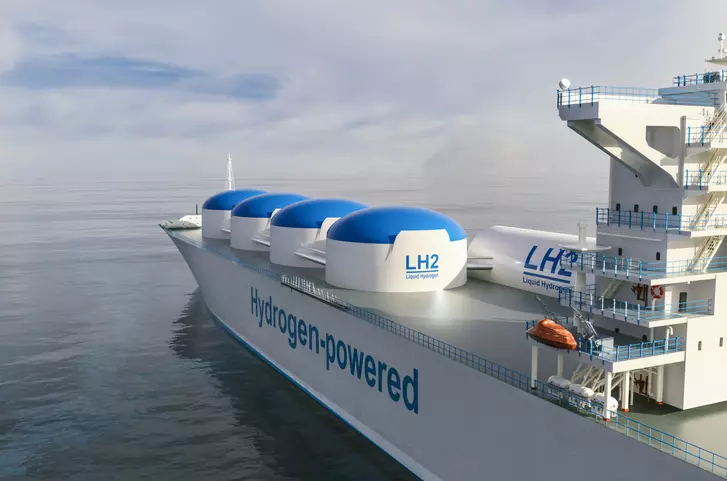OMNI Features|TotalEnergie, GTT, LMG Marin and BUREAU VERITAS announced a JDP of large liquefied hydrogen vessel With capacity 120 times more than the only carrier built to date / Microsoft signs PPA with Recurrent Energy for US PV project 127MW
OMNI Features|TotalEnergie, GTT, LMG Marin and BUREAU VERITAS announced a JDP of large liquefied hydrogen vessel With capacity 120 times more than the only carrier built to date / Microsoft signs PPA with Recurrent Energy for US PV project 127MW

|TotalEnergie, GTT, LMG Marin and BUREAU VERITAS have announced a joint development project of a large liquefied hydrogen vessel With capacity 120 times more than the only carrier built to date
GTT, TotalEnergies, LMG Marin and Bureau Veritas announced the success of their Joint Development Project (JDP), which resulted in two Approvals in Principle (AIP) from Bureau Veritas in building liquefied hydrogen carrier.
Bureau Veritas has approved the concept design for both the vessel and the cryogenic containment system to store the liquefied H2, which requires temperatures below minus 253°C to remain liquid.
With 150,000 cubic metres of storage capacity (equivalent to 10,500 tonnes), the nearly 290-metre vessel would be able to carry 120 times more hydrogen by volume than the Suiso Frontier, the first and only liquid H2 carrier built to date, which can only store 1,250 cubic metres of hydrogen.
The major company behind the Suiso Frontier, Kawasaki Heavy Industries, had in 2022 secured its own approval in principle from ClassNK for an even larger carrier capable of storing 160,000 cubic metres of H2.
Kawasaki’s design featured a boiler and steam turbine plant capable of operating using hydrogen as fuel, and a dual-fuel propulsion system that makes use of natural BOG as fuel to power the ship.
While a specific propulsion system for the vessel has not been disclosed, the press release indicated that it would transport “in a carbon-free way”, which could suggest most likely either a similar H2 propulsion system or a dual-fuel engine running on ammonia.
According to Hydrogeninsight, although liquid hydrogen has already been transported via Suiso Frontier from Australia to Japan, some disputes occur that commercial shipments will ever be economically viable, given the high cost of liquefaction and low energy density by volume compared to other vectors for transporting H2, such as ammonia and liquid organic hydrogen carriers (LOHC).
|Microsoft signs PPA with Recurrent Energy for US PV project 127MW
Microsoft signs agreement with Recurrent Energy to offtake energy from the 127MWdc Bayou Galion Solar site. Recurrent Energy is a subsidiary of Canadian Solar, which has secured US$160m in project financing for its 127MW Bayou Galion Solar project, located in Morehouse Parish in Northeast Louisiana. Microsoft will purchase 100% of the renewable energy credits produced by Bayou Galion Solar to support its goal to be carbon negative by 2030.
The project is currently under construction and is expected to be operational by the autumn 2024. At the end of September 2023, Louisiana had 145MW of operating wind, solar, and energy storage capacity.
Reference:GTT|Kawasaki|Hydrogeninsight|renews.biz
